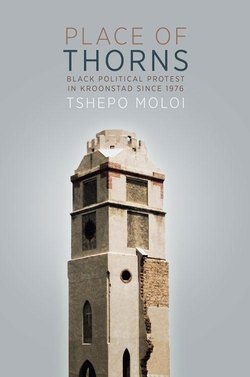Читать книгу Place of Thorns - Tshepo Moloi - Страница 6
На сайте Литреса книга снята с продажи.
ОглавлениеForeword
This is the first of an anticipated series on Local Histories and Present Realities, which has been mounted at the University of the Witwatersrand for the past seven years. Neither the history nor the present reality of South Africa’s smaller towns have attracted much attention over the past decades, even though a substantial section of the black population lives there or nearby. Yet as recent history tells us, they leave an imprint on South African history which is dangerous to ignore. Kroonstad is one of a group of towns which has been hugely significant in South African history. Its name crops up again and again in the background to more celebrated events. The centrality, which is even easier to ignore in their current depressed condition, was largely due to Kroonstad’s role as a crossroads of South Africa. It is located on the Vaal River, and has been a major crossing point for years-its Sesotho name—Bodibeng ba Likubu, where the hippopotami lie, is a Sotho recognition of its salience for travel somewhat later at the turn of the nineteenth into the twentieth century. It was also the infrastructural bridge where the railways south to north and from Natal passed each other by. It was to an unusual extent a melting pot in the Free State as elsewhere and was home to a prosperous range of businesses, hotels and shops. Among other things, it was home to a bustling Jewish population part of whose records lie in the Jewish Centre in Cape Town. It was also at the centre of a huge farming district, which made it a site of permanent residence to a black population and a staging post to the Witwatersrand.
Not surprisingly Kroonstad was a centre of black political activity, not least centering on its educational facilities. Its name crops up in a host of activities from the time of the ICU in the late 1920s and early 1930s, through student revolt of 1976 to the malignant role of the 3 million gang in the 1990s. Tshepo Moloi has chronicled all of this with careful balanced and meticulous detail. His is a classic example of the riches that local histories yield. He has consulted a vast range of primary material stretching from the African (and other) newspapers of the 1930s, through municipal and many other sources to provide a rich and provocative picture. Perhaps the crowning glory of this study is its massive reliance on oral testimonies, (85 in all) much of which were difficult to access, which provide a mass of human detail and human sensitivities to this book. This is a must read book and the beginning we hope of a new historical perspective.
JSM Setiloane
Principal of Bodibeng High School, 1962–1976
